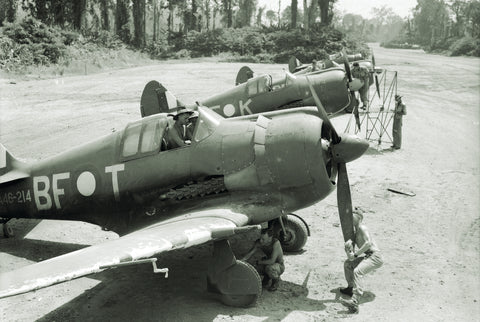
Australia’s Home-grown Fighter
After the war came to the Pacific, fears that Australia would be invaded reached a fever pitch when the Japanese began bombing Darwin in the Northern Territory in early 1942. With Britain and the U.S. preoccupied with their own fights and unable to offer spare airplanes or parts, the Royal Australian Air Force (RAAF) realized it needed a native-built fighter to help protect the homeland. They soon commissioned the Commonwealth Aircraft Corporation (CAC) to produce the single-seat Boomerang fighter. Model CA-12, depicted below, was the first of four variants built from 1942 to 1944.
CAC fashioned the Boomerang for high maneuverability, but it soon became apparent that the monoplane’s relatively low engine power made it too slow to successfully match up against the latest Japanese airplanes, and it never recorded any kills in combat. Once the RAAF’s fleet was reinforced with Royal Air Force Spitfires and P-40D Kittyhawks in early 1943, the Boomerang changed roles and became a successful ground-attack and reconnaissance aircraft. In missions in the Solomon Islands, New Guinea, and Borneo, the Boomerang’s maneuverability and 20mm cannon served it in good stead, especially in close troop support. Of the 250 Boomerangs built, only a few survive today.
